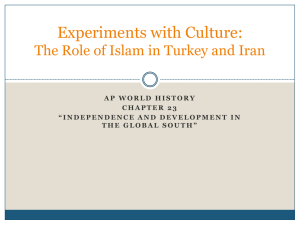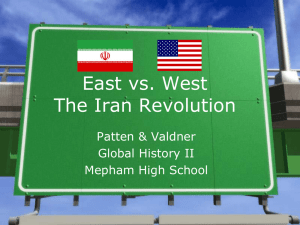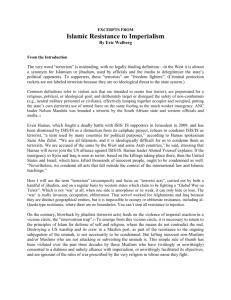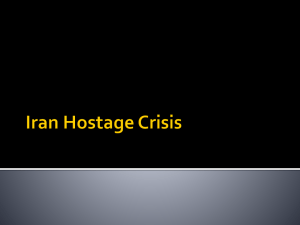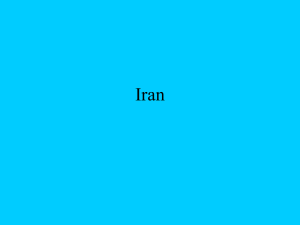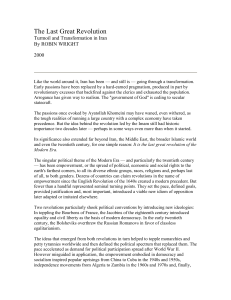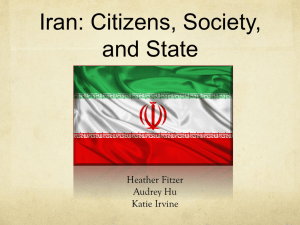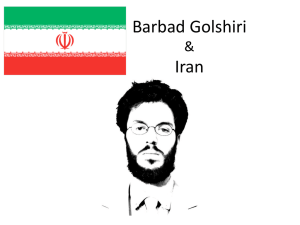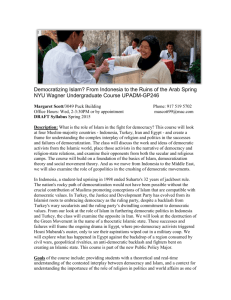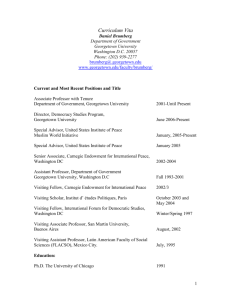The Role of Islam in Turkey and Iran
advertisement
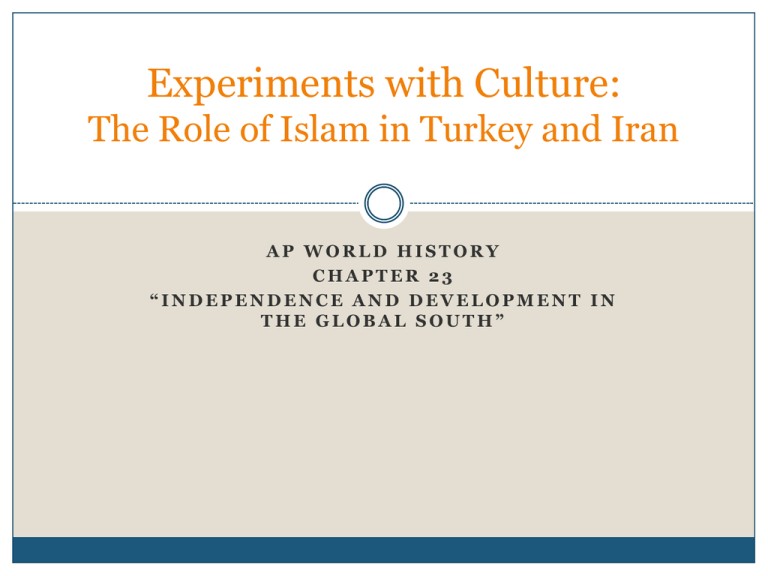
Experiments with Culture: The Role of Islam in Turkey and Iran AP WORLD HISTORY CHAPTER 23 “INDEPENDENCE AND DEVELOPMENT IN THE GLOBAL SOUTH” Experiments with Culture Common issue all across the developing world = how to balance older traditions with modernity and Western culture/outlooks Older traditions: Hinduism, Confucianism, Islam, etc. Western outlooks: scientific outlook, technology, capitalism, focus on material values, etc. Good examples of two very different approaches to this issue = Islam in Turkey vs. Islam in Iran Islam in Turkey Turkey = new nation created out of the remnants of the Ottoman Empire 1st leader = General Mustafa Kemal Atatürk Wanted to transform Turkey into a modern, secular (non-religious) state Believed modernization required the removal of Islam from public life, leaving it only to the personal/private realm Result = he ended the direct political role of Islam in Turkey Atatürk: Political and Religious Reforms Eliminated position of sultan Abolished the “caliphate” system Closed many Sufi organizations, sacred tombs, and religious schools Abolished many religious titles Dissolved Islamic courts Replaced the sharia with secular law codes Encouraged the celebration of pre-Islamic Turkish culture Entertainment at the Turkish Olympics Atatürk: Social Reforms Ordered men to abandon the Mustafa Atatürk traditional fez and wear brimmed hats instead Women not forced to wear a veil Encouraged European-style clothing Abolished polygamy Women granted equal rights in divorce, inheritance, and child custody 1934 = women granted the right to vote and hold public office Public beaches opened to women Modernization in Iran Shah Mohammad Reza Pahlavi ruled Iran from 1941 to 1979 Promoted Iran’s modernization with his “White Revolution” Redistributed land to many of Iran’s poor peasants Granted women the right to vote Invested in rural health care and education Started many industrial projects Offered workers a share of industries’ profits Built a solid alliance with the U.S. Modernization in Iran: Growing Opposition Local merchants = threatened by an explosion of imported Western goods and competition from large businesses Ulama (religious leaders) = offended by secular education programs that bypassed Islamic schools, as well as state control of religious institutions Educated professionals = found Iran’s dependence on the West disturbing Rural migrants to the cities = faced rising costs and unemployment Modernization in Iran: Growing Opposition Mosques = became the main centers for this growing opposition movement Led by Shi’ite religious leaders Emerging leader of this movement = Ayatollah Ruholla Khomeini In 1979 = massive urban demonstrations, strikes, and defections from the military forced the shah to abdicate the throne and leave Iran The Iranian Revolution (1979) Also known as the Islamic Revolution Cultural revolution = exact opposite of Atatürk’s revolution and reforms in Turkey Goal = increased Islamization of public life New government = an “Islamic Republic” Technically included a constitution and an elected parliament In reality = the ulama and other religious leaders had dominant power Headed by Khomeini The Iranian Revolution: Political Reforms Purpose of government = to apply the law of Allah as expressed in the sharia Judges not competent in Islamic law = dismissed Secular law codes under previous shah = discarded The Iranian Revolution: Educational Reforms 200 universities and colleges closed for 2 years while textbooks, curricula, and faculty were “purified” of nonIslamic influences Elementary and high schools = now gave priority to religious instruction and teaching Arabic 40,000 teachers fired because not “devoted” enough to Islam Pre-Islamic history and literature = abandoned The Iranian Revolution: Women 1983 = all women required to wear a hijab – head-to-toe covering Militants/guards = enforced this Punishments for a “bad” hijab = harassment, public lashings, or even imprisonment Sexual segregation in schools, parks, beaches, and public transportation Legal age of marriage for girls = reduced to 9 with parental consent; 13 (then 15) without it Married women could not file for divorce or go to school “Exporting” Islam Khomeini wanted to spread Islam throughout the world Wanted the replacement of insufficiently Islamic regimes in the Middle East Appealed to Shi’ite minorities in Lebanon, Syria, Bahrain, Saudi Arabia, and Iraq Intensified the divide between the Shi’ite minority and the Sunni majority 1980-1989 = war between Khomeini’s Islamized Iran and Saddam Hussein’s highly secularized Iraq Maintaining Economic Modernity in Iran Oil revenues in Iran = fund its development Early 21st century = Iran was pursuing nuclear power and (perhaps) nuclear weapons
